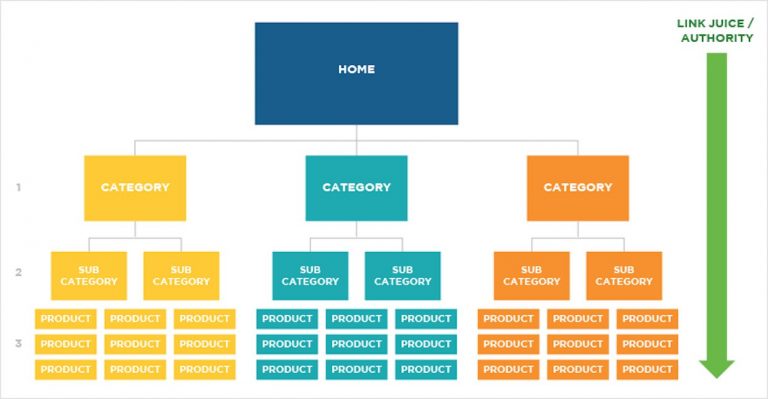Lots of online business owners face tough challenges when the success of their business is put to the test. They are not able to make huge profits because, simply, their website is nowhere to be found on the Google search page results. The root of this problem lies in the neglect of the importance of SEO. In fact, what one should do first, is check whether their eCommerce site is SEO optimised and whether there are mistakes that are doing the most harm. The chances that there are, are huge.
Here are the most common mistakes.
Table of Contents
The URL Structure
A large number of e-commerce sites make this mistake when it comes to the URL structure, and that is a mistake that can cost them a lot. Unorganized categorization, using the same word in one URL several times and too long URLs are the biggest and the most frequent mistakes that most of the e-commerce sited have.
How Should the URL Structure of an eCommerce Site Look Like?

Each e-commerce site should be divided into general categories and subcategories. Let’s take a look at the sample URL of a website that sells lighting solutions (indoor, outdoor and commercial lighting). A lot of companies would use this structure:
example.com/indoor-lighting/led-lighting/led-strip-lighting
From the example, it can be concluded that there is a main category (Indoor Lighting), a subcategory (Led Lighting) and one last subcategory (Led Strip Lighting).
You must be wondering what is wrong with this URL structure?
The answer is, there are two problems:
- The URL is too long.
- The same word is repeated several times (“lighting” is used three times).
Targeting the Same Keywords for Multiple Category Pages
Another common mistake that most e-commerce site has is that they unconsciously target the same keywords on more than one product categories. This happens at the very beginning, while the eCommerce site is being built, and when there is still not a good ecommerce SEO strategy implemented. To avoid this, before constructing the organisation of the website, it is necessary to do keyword research so that every category and subcategory would target different keywords.
Here is an example of such division of keywords according to categories:

The Crawling Budget Spends Time on Irrelevant Pages
What does the “crawling budget” mean? How can Google bot be regulated?
“Crawling budget” is the time that the Google bot spends on a website. It can be regulated or directed in two ways: with the Robots.txt file and XML Sitemap with attribute priority.
All the pages that are not desired to be indexed should be disabled so that the Google bot won’t visit them. Because if it visits these sites, it will spend the allotted time there rather than on the right pages.
Through the XML Sitemap, the Google bot is shown the pages that should be listed as a result on Google and with the attribute priority, Google is notified which of the pages have important information and which don’t.
Non-optimised Product Category Pages
A lot of eCommerce pages don’t optimise their categories. The optimisation of categories consists of a text that describes the category and all the products that are listed, title and meta description, images (with a title, name of the file and alt tag) and page title (H1 tag). This is a problem that is present in all the e-commerce sites that are built on a Shopify platform or in WordPress (wooCommerce).